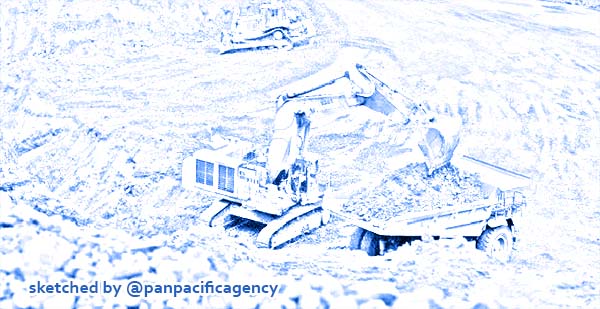Indonesia to ban nickel exports from January 2020

Activities at a nickel mining site. (Kontan/Cheppy A. Muchlis). Sketched by the Pan Pacific Agency.
JAKARTA, Sep 4, 2019, The Jakarta Post. The Energy and Mineral Resources Ministry has announced that Indonesia will stop nickel exports as of Jan. 1 next year to accelerate the establishment of domestic smelters while its nickel reserves are limited, reported The Jakarta Post.
According to coal and minerals director general Bambang Gatot Ariyono, Indonesia would need 81 million tons nickel ore supply per year as it currently has 11 working smelters and would build 25 more.
Bambang said that the ban of nickel ore exports was in line with the national plan to accelerate the establishment of smelters so that Indonesia could sell value-added nickel products such as stainless steel slabs.
“We already exported 38 million tons up until July this year. At this rate, we would need to think about our reserves especially if we keep issuing exports permits,” he said at a press conference.
Indonesia mostly exports raw nickel ore instead of intermediate products such as batteries and stainless steel.
“We would stop exporting all quality of nickel, not just ore with 1.7 percent nickel,” he told the press.
Bambang said the government is giving mining companies four months to complete their exports contracts as all exports would need to be completed by Dec. 31.
The date is two years earlier than the government’s initial plan to ban nickel ore exports in January 2022.
Indonesia was the world’s largest nickel producer in 2018 with 560,000 tons. The nation’s average production is expected to grow 8.1 percent in the 2018-2027 period, outperforming all other global nickel producers such as the Philippines and Canada.
Indonesia had proven reserves of about 698 million tons of nickel that could be mined for the next seven to eight years.
Bambang acknowledged that Indonesia actually had potential reserves of 2.8 billion tons of nickel but they needed to be explored.